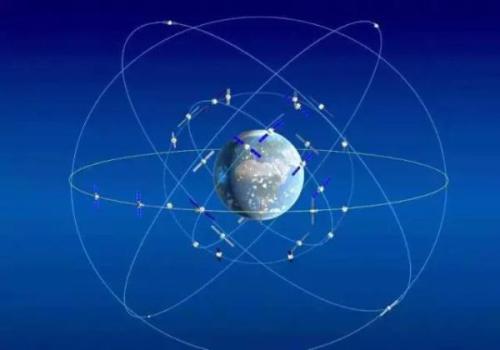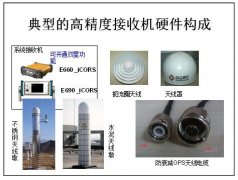近期,GPS World 对知名专家学者2019全球卫星导航行系统发展趋势预测进行了梳理汇总,亮点颇多,不容错过。全球定位系统处主任史蒂夫·惠特尼(Steve Whitney)上校指出:要通过GPS企业集成发展路线图,着力发展ERTL、ERM及ERM-M-代码三方面的能力。 ERTL主要聚焦于整合一系列顶尖资源,如新的卫星、新的地面系统和新的发射提供者,安全地将航天器送入预设轨道,并对其进行有效控制;ERM的目标为将GPS III卫星带入活跃的星座,提供类似于当今星座系统的服务功能;ERM-M-代码侧重军用,主要为战士提供更强大、更具灵活性、抗干扰/防篡改的PNT信号能力。
欧洲空间局Galileo项目计划部主任Javier Benedicto指出:自2016年12月宣布初始服务以来,欧洲航天局(ESA)和欧洲全球卫星导航局(GSA)一直致力于伽利略系统能力和服务鲁棒性的建设。2019年初, Galileo的工作卫星将多达22颗。在星载软件升级并可为用户提供自动健康状态标记后,卫星椭圆轨道上增加的两颗FOC卫星会加入运行星座,届时将有24颗伽利略卫星为全球用户提供PNT服务支持。此外,欧空局已为第一批“过渡卫星”启动了竞争性采购程序,其中考虑到了广域增强及一些其他的新功能,包括改进的信号域、更快的信号采集能力、更低的接收器功耗、星载时钟技术、星间链路、电力推进、灵活的有效载荷,以及通过机载数字技术和在轨重构实现的功率分配。
北斗卫星导航系统总设计师杨长风院士总结说:2018年北斗在系统建设、系统集成和国际发展等领域取得了丰硕成果。北斗二代系统性能得到了很大提升,北斗三代星座部署基本完成,并集成了前两代北斗系统的短报文通信功能,短报文信息容量可达原来的10倍。2019年至2020年间,北斗将继续努力提升服务的持续性、稳定性和准确性,并通过发射另外6颗MEO卫星、3颗IGSO卫星及2颗GEO卫星推进北斗三代卫星的部署, 实现2020年为全球用户提供导航、定位、授时、短报文通信及搜救等服务的目标。
俄罗斯航天系统公司主管Yury Urlichich认为:2019年将为GLONASS用户带来许多新的机遇。通过用户层面信号的准确性和可用性方面的评估获取改善的导航服务能力是2019年的首要目标。Glonass-K2计划于2019年发射。与Glonass-M和Glonass-K卫星相比,Glonass-K2的任务要求将用户测距误差定义为0.3米。提升导航精度主要借助空间系统的发展,包括轨道星座(空间部分)和地面控制部分,由此实现GLONASS用户性能的改善。
现将GNSS 2019发展趋势预测原文转发如下,以飨业内同仁及广大读者。如果您对北斗卫星导航系统及产业发展有任何意见或建议,欢迎留言或直接与我们联系。
正文:
Galileo Moves toward FOC
BY Javier Benedicto, HEAD, GALILEO PROGRAMME DEPARTMENT, EUROPEAN SPACE AGENCY
Since the declaration of initial services in December 2016, the European Space Agency (ESA) and the European GNSS Agency (GSA) have expanded Galileo’s system capabilities and service robustness with significant improvements of the ground segment and the last batch of four satellites launched by Ariane 5 in July. Once these satellites reach their final position and complete their in-orbit commissioning before the end of 2018, all 24 nominal slots of the Galileo constellation will be occupied. Up to 22 satellites are planned to be commissioned in early 2019 and, eventually, the two FOC satellites injected in elliptical orbit should join the operational constellation after on-board software upgrade to provide for automatic health status flagging to users. This should lead to a total of 24 operational Galileo satellites supporting global PNT for users worldwide.
Countdown team at Kourou, Guiana control center for July’s 4-satellite launch.
New Infrastructure Contracts
To further expand the system capabilities by 2020 and beyond, and reach Full Operational Capability (FOC), ESA has awarded new large industrial contracts in the context of the Exploitation Phase.
A contract to build and test another twelve Galileo satellites (so-called Batch-3) was awarded in 2017 to a consortium led by prime contractor OHB GmbH in Germany, with Surrey Satellite Technology Ltd in the UK as payload prime. These new satellites are based on the already qualified design of the previous Galileo FOC satellites. Production is advancing well, with first launch planned by late 2020.
With the Galileo constellation now expanded to 26 navigation satellites and plans to deploy additional Batch 3 satellites, the ground control infrastructure is undergoing a corresponding upgrades. In July, ESA awarded a new contract for the Galileo Ground Control Segment to GMV Aerospace and Defence, Spain. This contract includes upgrading the system architecture to manage a constellation of up to 41 Galileo satellites, updating obsolescent elements in the current system, improving operability linked to the provision of services and additional telemetry, tracking, and command capabilities to improve system robustness.
In October, Thales Alenia Space in France received a contract to upgrade the Galileo Ground Mission Segment and the Galileo Security Monitoring C ent res (GSMC). This wor k includes upgrading Galileo’s system architecture to provide more accurate navigation products for broadcast by Galileo satellites, updating obsolescent elements in the current system and improving operability linked to the provision of services and enhanced robustness. It will also include the construction of additional navigation message uplink and sensor stations. This contract will also augment the capabilities for implementation of the Public Regulated Service (PRS), the single most accurate and secure class of Galileo signals. Encrypted PRS signals will be made available only to authorized governmental users through approved national authorities. GSMCs in France and Spain will ensure the security monitoring functions for Galileo operational assets and manage PRS access and operations.
Growing Service Portfolio
The European Commission, GSA and ESA have jointly defined a broad range of service improvements and system capability enhancements to be deployed in 2019–2020, leading to FOC.
The newly qualified system infrastructure will support the broadcast of authentication information as part of the Open Service Navigation Message in E1; experimentation will start by end of 2019, leading to the possibility to offer trusted PNT to Galileo users.
Galileo will also be the first GNSS constellation to provide a Search and Rescue return link capability: as of 2019 the system will allow broadcast of acknowledgement of receipt message to users in distress with a very low latency, contributing to saving lives.
ESA has also started preparing the necessary modifications to the Navigation Signal Generation on- board the satellites to offer further capabilities to users after 2020. The signal-in-space will be enhanced with additional data transmitted in the I/NAV message, offering faster acquisition and more robust Galileo positioning on E1 and an encrypted navigation signal on E6 supporting authentication at signal level.
The new Galileo High Accuracy Service, soon entering the experimental phase, will consist in the delivery of un-encrypted high accuracy correction data in E6, enabling users to achieve sub-meter level positioning.
The usage of Galileo Open Service for aviation applications using horizontal advanced receiver-autonomous integrity monitoring techniques is being carefully assessed through measurements and review of the system design, including feared-events characterization.
Longer-Term Evolution
Galileo Second Generation has been the subject of technology pre- developments in the areas of platform and payload critical equipment, system techniques and processing algorithms, as well as system and segment Phase B studies over the past few years. We are now approaching the start of the implementation phase. The European Commission, in close consultation with EU member states, has defined a decision roadmap aiming at very important future budget and programme implementation decisions in the course of 2019. In this context, ESA has launched a competitive procurement procedure for the first batch of so-called “Transition Satellites” with a broad range of enhanced and some new capabilities being considered. This includes improvements in the signal domain for faster acquisition and lower receiver power consumption, on-board clock technology, inter-satellite links, electrical propulsion, flexible payloads and power allocation by means of on-board digital technology and in- orbit re-configurability. Transition satellites and related ground segment development contracts will begin by the end of 2019, aiming at in-orbit validation of second-generation capabilities from 2025 onwards.
EGNOS Evolution for Aviation
The adoption of Europe’s SBAS EGNOS by aviation is growing faster and faster. EGNOS will continue to evolve in the coming years. In particular, for 2019 and 2020, the evolutions under implementation focus on the obsolescence management of the hardware of some critical components, improvement of the system performances thanks to addition of new stations and system algorithms. All these evolutions are planned to be qualified in 2021-2022, to continue to offer an excellent level of performance to Aviation Users until the operational take-over by the second generation of EGNOS V3, planned in 2025. The European Performance-Based Navigation Implementing Regulation plans a growth from the current 35% to 66% in 2020 and 100% in 2024 of all European airports instrumental runways end-equipped with SBAS localizer performance with vertical guidance procedure. On the aircraft manufacturer side, Airbus confirmed that it will continue equipping its aircraft, following the A350 family already equipped, both A320 and A330 families will be equipped for entry into service in summer 2020.
NAVISP
ESA’s Navigation Innovation and Support Programme (NAVISP), launched in 2017, will continue to boost member states’ industrial competitiveness and innovation in the upstream and downstream navigation sector, investigate the integration of satellite navigation with non-space technologies and complementary positioning and communication techniques, and study novel receiver- based techniques to counteract vulnerabilities and improve the robustness and reliability of GNSS.
Conclusion
The EU-built GNSS infrastructure systems EGNOS and Galileo are operational and serving users in Europe and worldwide. EC, GSA, ESA and European industries are committed to improvement plans over the next 2–3 years, with emphasis on endurance, resilience and robustness of the systems’ infrastructure, and delivering enhanced services. For the longer term, the real challenge is to modernize the systems with new spaceborne and ground technologies, increase operational robustness and automation, and provide for additional system capabilities, while retaining a large degree of flexibility and in- orbit re-configurability to meet the long-term challenges and evolution of satellite-based navigation and timing.









